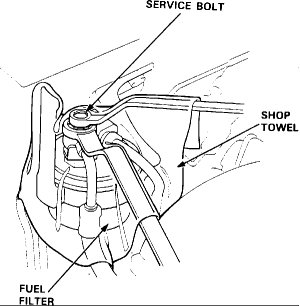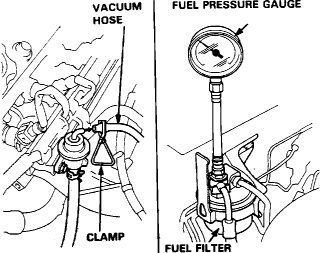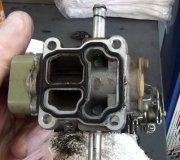Hi Bryan and thanks for using 2CarPros.com. Since the issue is happening under a load, I have to question if the fuel pressure is weak and the pump unable to keep up with the fuel demand. What I would suggest is to start by checking fuel pump pressure.
Here is a general video to give you an idea how it is done:
https://youtu.be/peh7-pFycyc
Now to be specific to your vehicle, here are the directions from alldata.
Warning: Do not smoke while working on the fuel system. Keep open flames or sparks away from the work area. Be sure to relieve fuel pressure while the engine is off .
Relieve fuel pressure.
Disconnect the battery negative cable from the battery.
Remove Fuel Filler Cap.
Use a box end wrench on the 6mm service bolt at the Fuel Rail, while holding the special banjo bolt with another wrench.
Loosen The Service Bolt
Place a rag or shop towel over the 6mm service bolt.
SLOWLY loosen the 6mm service bolt one complete turn.
Remove the service bolt on the Fuel Filter while holding the banjo bolt with another wrench and attach the fuel pressure gauge.
Clamping Pressure Regulator Hose And Measuring Fuel Pressure
Reconnect the battery Negative cable.
Start the engine. Measure the fuel pressure with the engine idling and the vacuum hose of the Fuel Pressure Regulator disconnected.
PRESSURE AT IDLE SHOULD BE: 280 - 330 kPa (40 - 47 psi)
NOTE: If the engine will not start, turn the Ignition Switch on, wait for two seconds, turn it off, then back on again and read the fuel pressure.
Reconnect the vacuum hose to the Fuel Pressure Regulator.
PRESSURE AT IDLE SHOULD BE: 215 - 265 kPa (31 - 38 psi)
If the fuel pressure is not as specified, first check the fuel pump. If the pump is okay, check the following:
If pressure is higher than specified:
Pinched, collapsed, or clogged fuel return hose or piping
Faulty Fuel Pressure Regulator
If pressure is lower than specified:
Clogged Fuel Filter
Fuel Pressure Regulator failure
Leakage in the fuel system
The aforementioned directions provide possible causes based on your findings. Additionally, I have attached two pictures for you. They show where and how to check pressure on your car. You will need to get a pressure gauge, but most parts stores will lend one to you. Additionally, the directions list the fuel pressure you should have.
I really hope this helps you.
Cheers,
Joe
Images (Click to make bigger)
Sunday, May 6th, 2018 AT 8:50 PM




